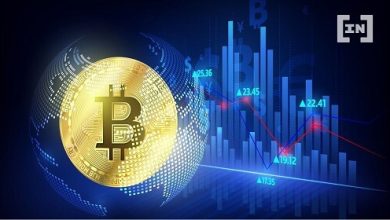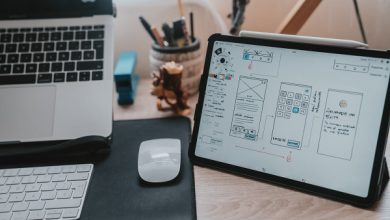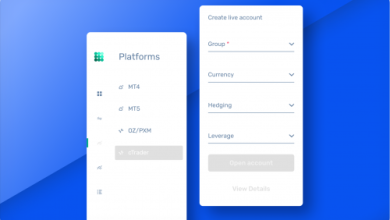Lear Capital Founder Explains Why Investors Should Consider Precious Metals Over Crypto to Hedge Against Inflation

While some investors may have viewed cryptocurrency as a hot asset category in recent years, a number are now expressing an interest in physical precious metal asset-based investment options, for a few reasons, according to Kevin DeMeritt, founder and chairman of Los Angeles-based gold and precious metals firm Lear Capital.
Upsets in the crypto arena are one factor. Last December, for instance, the Securities and Exchange Commission charged the CEO of the FTX trading platform in connection with “orchestrating a scheme to defraud equity investors,” with FTX customers’ funds being diverted to a privately held crypto hedge fund, Alameda Research LLC.
After receiving $4.3 billion in late 2022 from the Federal Home Loan Bank of San Francisco, Silvergate Capital, a central crypto industry bank that reportedly counted FTX among its customers, announced in March that it planned to cease operations and liquidate, according to CNBC.
In a February 2023 speech, Federal Reserve Gov. Christopher J. Waller called crypto assets speculative and likened them to baseball cards, saying they “are risky, and many of the firms dealing in them are in their infancy.” He said this had been noticeable in the past year as several crypto-related entities — including, Waller said, payment platforms, exchanges, crypto lenders, and hedge funds — filed for bankruptcy.
“We keep hearing that bitcoin is the digital gold, and it may be,” Kevin DeMeritt says. “But a lot of these recent bankruptcies in the crypto markets, along with the crypto banks having to be bailed out, are going to make some investors leery — and gold and silver will be a beneficiary.”
Crypto’s Challenging Year
Cryptocurrency systems circulate money using blockchain technology, which involves transactions being recorded on a digital ledger in lieu of a traditional bank structure. No one specifically owns or maintains the ledger; transactions are recorded automatically.
The system offers some possible advantages for those who use it, such as potentially lower transaction costs and privacy, which helped drive interest in crypto. There’s no guarantee, however, that investing in the asset category will provide sizable returns.
Bitcoin, for instance, one of the best-known cryptocurrencies, supplied returns of nearly 24% — notably more than the stock market’s 10% average — several years ago in 2017’s fourth quarter. Yet after reaching more than $65,000 in 2021, by the end of last year, bitcoin’s price had declined to less than $17,000, a level it hadn’t been at since late 2020.
In addition to price volatility, crypto investment features and potential returns can, at times, be misrepresented, according to research released by the White House. Along with an increase in crypto-related digital scams, a Wall Street Journal investigation found investments may involve transparency and disclosure issues, ranging from plagiarized documents to false information about executive teams.
Although some industry members felt crypto would be inflation-proof, prices declined when the Federal Reserve began to raise interest rates to address the high level of inflation in the U.S. — and individual investors experienced losses, according to NPR.
The current uncertainty in the crypto market, including questions surrounding the impact regulations could have on certain varieties of cryptocurrency, might make investors nervous about the liquidity aspect and ability to sell crypto in the future, Kevin DeMeritt explains.
“No one wants to wake up, and you just can’t [sell a type of crypto] coin,” the Lear Capital founder says. “Whereas [with] gold, [which has] a 5,000-year track record — [compared to] crypto, with a 12-year track record — you’re just going to get a lot more predictability than you will with everything that’s going on in [the] crypto [market] at this particular point.”
Physical precious metal assets can provide several key benefits. In the past, they’ve served as an inflation hedge, for instance.
“Gold and silver have historically performed very well in times of inflation,” Kevin DeMeritt says. “Gold was up 300%, silver was up 500% in the 1970’s, which was the last time we saw inflation [as] high [as it’s been in the past year].”
Precious metal assets can also offer two other investing advantages: simplicity and tangibility.
“We’re already starting to see some people [who] own crypto move over to gold because they don’t have to put it [in] some digital wallet and go through that whole process,” Kevin DeMeritt says. “They actually physically can [possess gold].”
Gold and Silver’s Investment Appeal
Over the next year, Kevin DeMeritt expects precious metal assets will be a popular choice among investors — including retirees.
“Through these past 10 or 15 years, they’ve been after capital appreciation, so they have more to retire on,” he says. “They’re moving from that to, ‘I need some of that money to create income’ [with investments like] dividend stocks; and they want to make sure they have stability in their portfolio — so we’re starting to see people take some portion of their investments and move [it] over to have the diversification and the security [of] precious metals.”
With the number of Americans 65 and older expected to expand from roughly 58 million to 76 million by 2035, according to Social Security Administration estimates, retirees developing a greater interest in precious metal investments could significantly contribute to the asset category’s growth.
Another subset, though — young investors — may also be drawn to physical precious metal asset-based investing, Kevin DeMeritt says, even though that demographic has had a considerable interest in crypto in the past.
As Lear Capital noted in October, research has shown more than a quarter (29%) of high net worth millennials and Generation Z members favor crypto investments instead of assets like stocks, which older generations have tended to prefer. By 2021, 38% of Americans 18 to 24 owned or had owned bitcoin, for example. An additional 36% said they planned to invest in it in the future.
Next year, however, Kevin DeMeritt says, a number of young investors could shift their efforts to precious metal investments.
“We’re starting to see younger people come into the market,” Lear Capital’s DeMeritt says. “They put a lot of faith in crypto, and it’s had a lot of volatility, so they want to diversify from digital to real gold. It might not be their entire portfolio. [They might say], ‘I’m going to take 30% or 50% of my crypto and move that over’ — which is great. They’re diversifying. [Young investors and retirees] are the two groups we’re probably seeing the most activity [from], at this particular point.”





